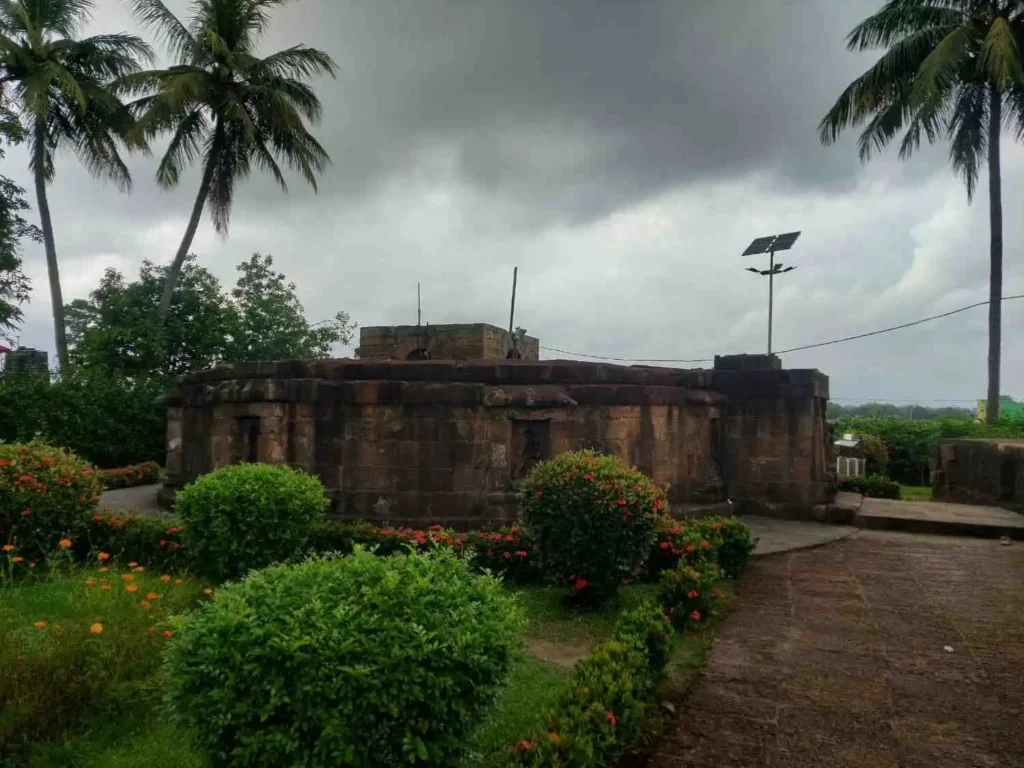
Agarpada: The Land of Jagannath and Karma Mandir
Jagannath Temple & Ananta Mahadev Jew Temple
Among the famous temples in Bhadrak, Agarpada shines for its rich spiritual roots and striking architectural presence. This town features the Jagannath Temple and the Ananta Mahadev Jew Temple, both known for their deep cultural value.
Firstly, the Jagannath Temple includes a two-chambered layout and a vimana adorned with divine sculptures. Figures of Varaha, Narasimha, and Vamana appear in its central raha niches. Although the bada has aged and seen repairs, the Jagamohana still reflects the temple’s former grandeur. Moreover, vibrant festivals like Rathayatra and Bahudayatra bring in thousands of devotees each year. Worshippers honor Lord Jagannatha, Balabhadra, and Subhadra during these joyful events.
Additionally, the Ananta Mahadev Jew Temple adds more sacred charm to Agarpada. This site also ranks among the famous temples in Bhadrak for its historical and spiritual importance. Inside stands a striking Chaturbhuja sthanka murti of Vishnu, known as Adimurti Vasudeva or Madhava. The idol measures 3 feet 4 inches tall and showcases post-Gupta artistry. Furthermore, its long yajnopavita, puspakundala, and kiritamukuta reveal ancient India’s exquisite craftsmanship. In conclusion, this temple offers both spiritual depth and artistic legacy, making it a true cultural gem.Karma Mandir and Anapal Mahatab Kothi
Agarpada is also proud of its Karma Mandir—a memorial of Dr. Harekrushna Mahatab’s constructive initiatives following the Civil Disobedience Movement. This temple, established during the freedom struggle, not only highlights Gandhiji’s philosophy of self-sufficiency through spinning by the charakha but also remains a silent witness to the region’s socio-political history. As with the famous temples in Bhadrak, it reflects the area’s deep connection to both spirituality and legacy.
Not far from the Karma Mandir is the Anapal Mahatab Kothi, a single-storied building with spacious rooms and arched windows. Historically significant, it hosted numerous planning sessions during the freedom movement, making Agarpada a hub of revolutionary zeal and cultural renaissance.The Enigmatic Temples of Anja and Apanda
Anja Sindhukeswar Temple
Apanda: A Blend of Buddhism and Hinduism
Aradi: The Sacred Abode of Lord Shiva
Bhadrak – The Heart of the District
Bhadrak town, the administrative headquarters, is situated along the serene banks of the river Salandi. The town derives its name from Goddess Bhadrakali, whose temple is located 8 km away. This temple attracts a large congregation during the annual Kali Puja festival, one of the most famous pujas in Bhadrak. The town is also known for its historical legacy in folk drama—Mughal Tamasa—a unique form of satirical play that portrayed the decadent lifestyles of historical figures, providing an entertaining glimpse into the past.Dakhina Kali Temple
Sadabartta Matha at Puruna Bazar
Bhadrakali and Beyond: Temples in the Outskirts
Bhadrakali Temple
Ghanteswar Patana Chatrapur: The Temple of Lanka Devi
Gohiratikiri and Guamal: Relics of a Bygone Era
Nayakani Temple, Iswarpur, Tihidi
Paliabindha and Solampur: Hidden Gems
Paliabindha is a small village famous for its temple dedicated to God Biranchinarayan. Local people recently restored this temple, which features door jamb sculptures reminiscent of the Siva temples of Bhubaneswar and Khiching, dating back to the 10th–11th century A.D. The temple’s unique layout—with four door entrances and deities facing all directions—adds to its mystique.
Solampur, another village in the region, is known for its ancient Mahayani and Tantric Buddhist deities. The Raghunath temple here showcases exquisite stone carvings that depict eight major events of Buddha’s life. The precision in these sculptures, along with the Avalokitesvar and Tara images, showcases the artistic achievements of the Gupta and post-Gupta periods.Answering Your Questions About Bhadrak
What is Bhadrak, Odisha famous for?
Who is the famous temple in Odisha?
Which puja is famous in Bhadrak?
What is Bhadrak famous for?
What is the biggest festival in Bhadrak?
Which sea beach is in Bhadrak?
Which river flows in Bhadrak district?
What is the religion of Bhadrak?
What is the speciality of Bhadrak?
Plan Your Spiritual Journey
Bhadrak’s temples are not just monuments of stone and art. They serve as living institutions that continue the legacy of faith, culture, and history. Whether you are a devotee, a history enthusiast, or a traveler seeking inspiration, the temples of Bhadrak offer a timeless journey through India’s spiritual heritage.
Are you ready to embark on your spiritual journey? Explore Bhadrak and admire the breathtaking architecture of its temples. Experience the vibrant festivals that locals have celebrated for centuries. Pack your bags, plan your visit, and immerse yourself in the divine energy flowing through every corner of Bhadrak, Odisha.

